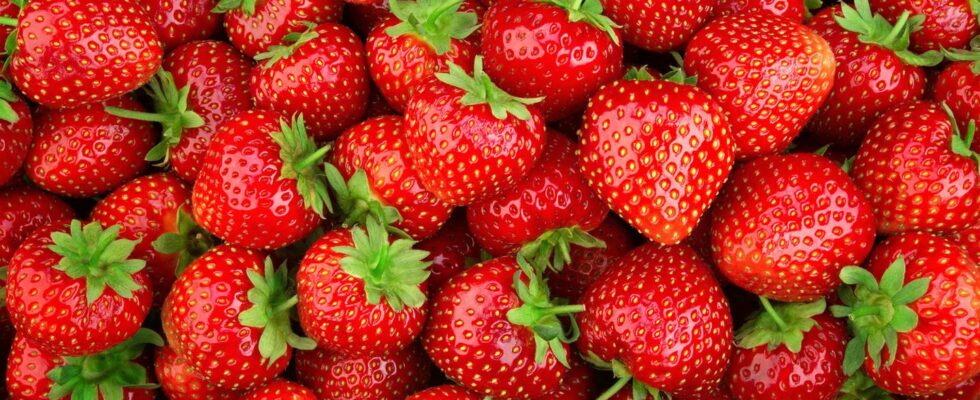For the environment
Why you shouldn’t buy strawberries in April
© Tim UR / Adobe Stock
We are used to finding strawberries on the supermarket shelves at any time of the year – sometimes they come from Morocco, sometimes from Turkey and currently increasingly from the number one export country: Spain. Why this is problematic.
For many, the start of the strawberry season also means the start of summer. Finally there is strawberry cake again, vanilla ice cream with pieces of strawberry or simply the pure pleasure of a picnic by the sea, in the park or at the lake. Strawberries make everything feel better and are a favorite snack for many when it’s finally warmer outside and the sun shines longer than before. But the German strawberries only come into the shops between May and September – at the moment there are mainly imported goods and consumers should know a lot about that. Around 130,000 tons of strawberries were imported in 2022. Main importing country: Spain.
Spain: Where drought is a problem and strawberries are not exactly innocent
According to the WWF, an average of 300 liters of water are required for one kilo of strawberries. According to the environmental organization, this corresponds to two full bathtubs. According to the Federal Agency for Agriculture and Food, Spain was the number one exporter of strawberries in 2018. 77,145.4 tons of strawberries were exported. A quite lucrative business, at that time with 160,971,000 euros. The problem, however, lies in the already mentioned high water consumption. According to the Ministry for Ecological Transformation (Miteco), in July 2022 the highest temperatures since 1961 were recorded in Spain, as reported by Deutsche Welle. The water reserves are due to persistent drought and heat at an historic low.
Water had to be saved in many areas and in March this year 3000 hectares of forest were destroyed in a fire. The provinces of Teruel and Castellón, which are close to the Doñana National Park in southern Spain, were also affected. This is surrounded by huge strawberry plantations and is therefore suffering from a lack of water. According to environmental protection organizations, some farmers would illegally divert groundwater from the national park.
Illegal wells and high water consumption damage world cultural heritage
The 54,000-acre Doñana National Park is a UNESCO World Heritage Site and is home to about half of all European bird species. But he is not immune to illegal activities that play into the hands of the strawberry plantations. According to WWF around 1,900 hectares illegally used for strawberry cultivation and to ensure the high water consumption built illegal wells, which tap the groundwater of the park. There are said to be at least 1,000 of these wells in the region alone, and up to a million across Spain, according to the environmental organization.
Why we should focus more on seasonal products
Strawberry cultivation is not only causing problems in Spain. Other countries that export fruit also make their water scarcity worse. For example Morocco, where a lot of water is used for tomatoes, watermelons or strawberries, but which would be needed elsewhere in the country’s ongoing droughts. The country already decided in 2022 that there will be no more state subsidies for the construction of wells or pumps.
In many countries, environmental organizations are pushing for better agriculture that puts less strain on the ecosystem. Of course, it is clear that all the imported fruit also requires labour, and thus the livelihood of many people – and not all strawberries are cultivated using illegal plantations or irrigation systems. Simply getting rid of everything is simply not possible and would solve one problem but increase another. Nevertheless, consumers can with the increased purchase of seasonal and regional products, set a sign that this type of economy is not desired – and ensure that the imported products are used in a conscious and limited manner. Farmers based in Germany are also supported with local products. According to the Federal Center for Nutrition, most strawberries still come from Germany, followed by Spain.
Source used: Tagesschau, Deutsche Welle, Statista, Edeka, Le Monde, Federal Agency for Agriculture and Food
